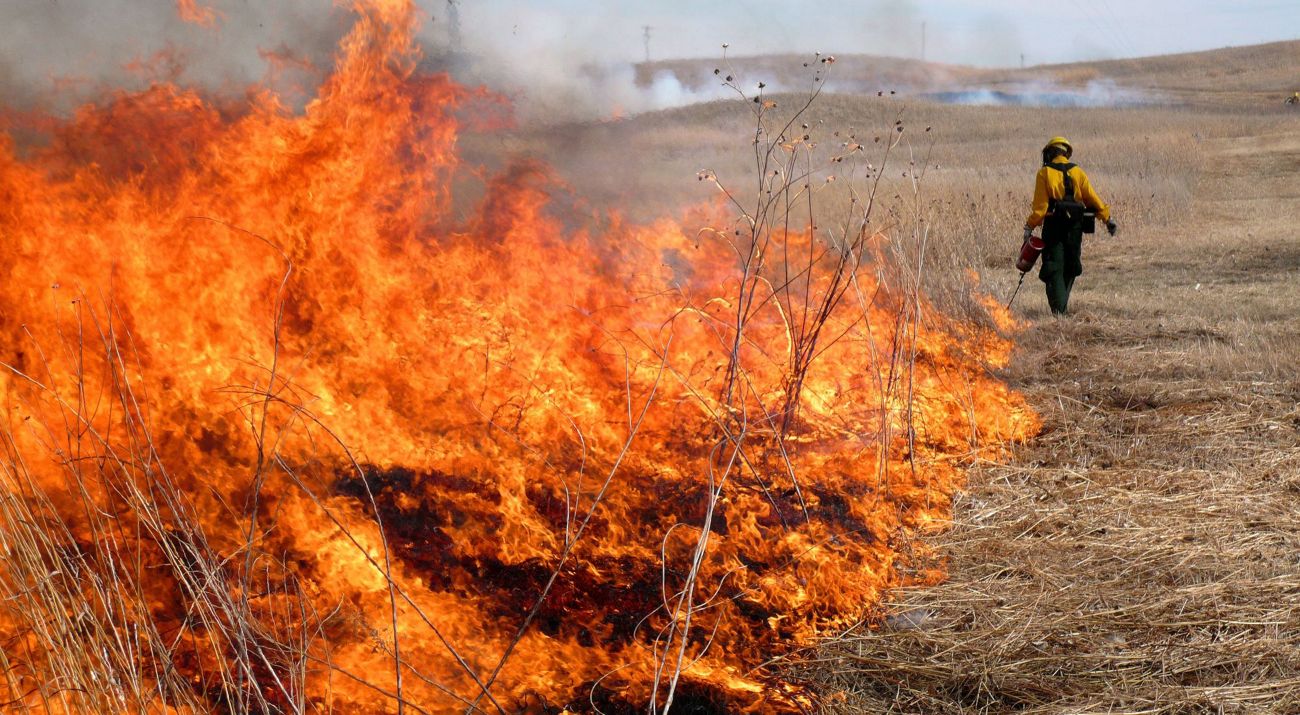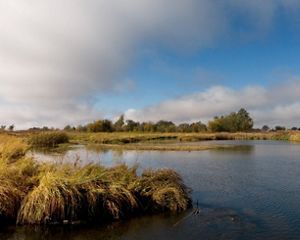
Saving the Sandhills
Prescribed Fire Coordinator Chad Bladow celebrates his 25th year with TNC and reflects on current strategies to protect the Sandhill prairies.
Sitting in a classroom at the University of North Dakota, Chad Bladow knew he wanted to use his degree in fisheries and wildlife biology for a boots-on-the-ground career doing stewardship on a preserve or natural area. But which career path, exactly?
When Bladow saw the opportunity to work with The Nature Conservancy’s fire crew in Florida, he took a chance and took a semester off to train with the Student Conservation Association. “That was the start of my career path in fire and with TNC,” he said. This month, Bladow celebrates the 25 years that have passed since.
After graduation, Bladow wanted to work for TNC. He took a seasonal job at TNC's Platte River Prairies, working with Director of Science Chris Helzer, then a land steward. When a permanent position opened with TNC in Indiana, he moved there and spent time honing his fire skills.
“Indiana hires an inter-agency crew to work on wildfires. I was working some of the time at preserves and some of the time with the U.S. Forest Service on crews with staff from the Department of Natural Resources, The Nature Conservancy and many other agencies,” said Bladow. “We worked two weeks at a time, and I learned a lot about fire coordination and fire behavior on different kinds of terrain. I did that for 10 years, from 1999 to 2010.”
Nebraska News
Get the latest updates about conservation work in Nebraska.
Qualified to Burn
Over the years, he built up his credentials until he became a burn boss—a highly sought-after leadership position. Bladow is qualified to plan, organize and execute what are known as “prescribed” or “Rx burns." These are intentional blazes created to manage and restore forest and prairie ecosystems. The burn boss is directly responsible for the fire and must prioritize safety for their crew and for the surrounding communities.
Nebraska had something hard for Bladow to resist: one of the last and largest remaining intact grasslands in the world and all the wildlife it supports. TNC chapters often help each other with complex stewardship projects. Bladow had been to the Niobrara Valley Preserve to help, and he immediately loved the Sandhills. “It’s such a beautiful area,” said Bladow. “I always wanted the chance to spend more time at the Niobrara Valley Preserve and in the Sandhills. When the Nebraska program started looking for a burn boss, I was eager to join the team and build the program.”
The Spread of Eastern Red Cedars
Though the Sandhills don’t suffer from the usual threat—fragmentation—they have been dealt a serious blow with woody encroachment, most dramatically by the spread of eastern red cedar. This native tree has spread rapidly and is “an increasingly serious ecological and economic issue with substantial impacts statewide,” according to the Nebraska Conservation Roundtable. It’s been spreading at a rate of about 25,000 acres a year.
It's a problem that requires an all-hands-on-deck approach. Fortunately, when Bladow arrived, he joined a network of fire professionals from organizations like the Nebraska Game and Parks Commission, the Sandhills Task Force, the U.S. Forest Service, the Nebraska Forest Service, the U.S. Fish and Wildlife Service, Pheasants Forever and the Natural Resources Conservation Service, all of whom bring something different to the effort. Every partner shares resources, and TNC is no exception.

A serious problem in the Sandhills, eastern red cedars is an invasive species controlled with prescribed burns.
Working with Landowners
“I meet with landowners ready to get fire on the ground. It’s great to tour their ranches and hear about the wildlife they see. I get a kick out of their ingenuity in getting fire on the ground. Of course, we owe an incredible debt of gratitude to Nebraska ranchers for keeping the Sandhills intact. They see the cedar trees making pastureland unusable for cattle. The conservation community wants to support them.”
In fact, landowner alliances are winning the war against invasive species in places like the Loess Canyons Rangeland Alliance, a group of “neighbors helping neighbors save the tallgrass prairie one acre at a time.”
“We are working to take the lessons learned there and apply them on a huge landscape,” said Bladow. “We can win in the Sandhills. Definitely.”





